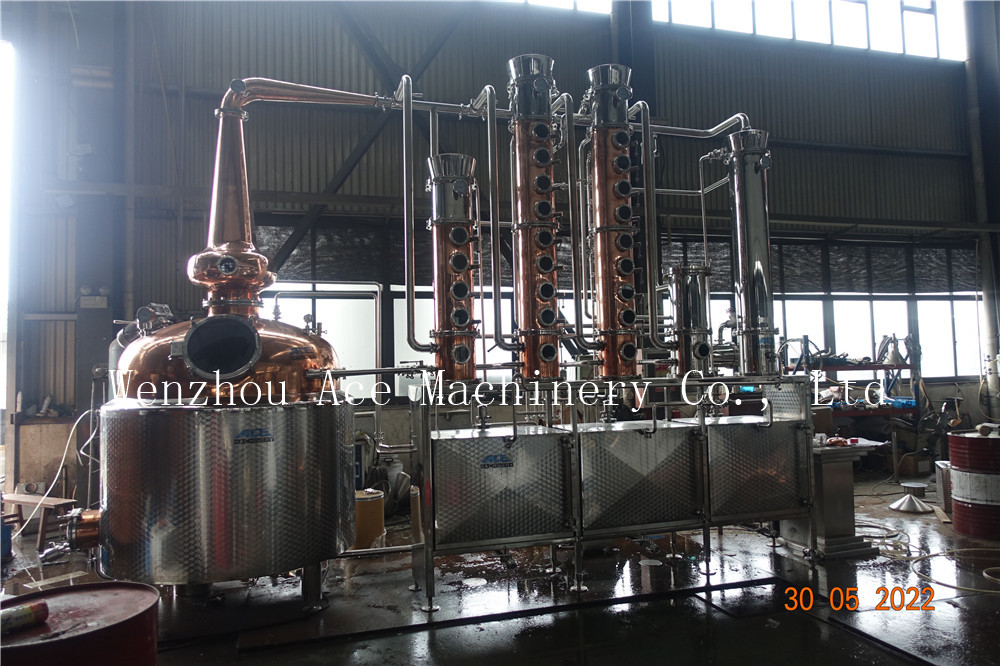Everything You Need to Know About Wine Distilling
View:
What is wine distilling?
Wine distilling is the process of making wine and reducing it down to a concentrated form. This can be done through several methods, but the most common is using a still. A still is a device that heats the wine and then condenses the vapor into a liquid. This liquid is then known as distillate and is much more concentrated than the original wine. Wine distilling has been around for centuries and is a vital part of many types of wine. It is used to make fortified wines, such as gin and whiskey, and some types of liquor.

The history of wine distilling
For a long time, distillation was a sure way to find wealth and immortality. Distilled spirits, known as the "water of life," were used only as medicine.
The history of distilled spirits began when people became interested in the formation of water vapor in a pot of boiling water. Ancient people understood that they could separate liquids by mimicking the water cycle in nature, so they began distilling whatever they could get their hands on.
At first, distilled resin, then gold, silver, lead, and even, according to Louis XIV, immature cranes, and human heads. Subsequently, they engaged in the more civilized act of extracting the essence of these substances, namely distilling alcohol.
In the beginning, however, distillation had a common purpose - to obtain the essential substances in the distillate that would bring - wealth, glory, and immortality.
In every period of history, people have boiled their imaginations at will around distillation stoves. For centuries, distillation has been considered one of the most admired sciences and technologies. And those who mastered distillation also believed they were only a few steps away from world domination and immortality.
The wine distilling process
The primary process of grape distillation is divided into fermentation and distillation.
After the grapes are harvested, the fermentation process generally takes less than two days from crushing to a full tank, with the grape juice (pulp) accounting for 80% of the tank capacity. High-grade grape distillate should be fermented by juice extraction and separation. In contrast, the production of ordinary grape distillate can be fermented directly from the grape pulp after crushing and stemming.
Natural fermentation method, the temperature does not exceed 34 ℃, the time is 4 ~ 6 days, you can fermentation is completed, after fermentation physical and chemical indicators for the alcoholic degree of 6% ~ 9%, residual sugar <3g / L.
After the fermentation is completed, a pouring pool can be carried out to remove the large grains of wine feet, retaining light wine feet, whole tank storage due to the high temperature of the fermentation season and the low alcohol content of the raw grape wine and therefore available alcohol capping to prevent the deterioration of natural wine.
The alcoholic liquor is then heated with a particular skill (such as an alambic charentais). Due to the different volatility of the various substances they contain, the alcohol (ethanol) is more volatile when heated for distillation, thus increasing the concentration of alcohol contained in the steam produced after heating. In contrast, the concentration of alcohol in the liquor decreases. Collect the alcoholic gas and remove the head and tail (the part containing more impurities) after cooling. That is, to get crudely distilled spirits. Generally, with a concentration of 24-32% (v/v), the crude distilled spirits will be filtered with the same head and tail removal. Finally, get the original grape distilled spirits with an alcohol concentration of about 60-70 degrees. Sometimes, to increase the alcohol concentration, it can also be distilled again.
Distillation Technique
The principle of distillation is straightforward, but its technique requires a wealth of experience and skill, carefully guarded by master distillers.
Distillation is separating high concentrations of alcohol from fermented wort by evaporation and condensation.
The distillation process is straightforward: the boiling point of pure alcohol is +78.4 °C, while the boiling point of water is +100 °C. Between these two temperatures, alcohol vaporizes faster than water. If it gets cold, the alcohol is condensed.
If you need a distiller, please get in touch with us. We have various distiller equipment.
